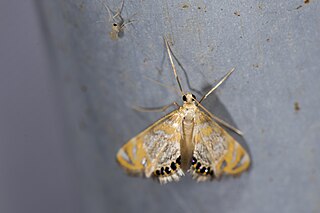Related Research Articles

Christopher George Latore Wallace, better known by his stage names the Notorious B.I.G., Biggie Smalls, or simply Biggie, was an American rapper and songwriter. Rooted in the New York rap scene and gangsta rap traditions, he is considered one of the greatest rappers of all time. The Notorious B.I.G. became known for his distinctive laidback lyrical delivery, offsetting the lyrics' often grim content and his own intimidating appearance. His music was often semi-autobiographical, telling of hardship and criminality, but also of debauchery and celebration.

The G20 is an international forum for the governments and central bank governors from 19 countries and the European Union (EU). Founded in 1999 with the aim to discuss policy pertaining to the promotion of international financial stability, the G20 has expanded its agenda since 2008 and heads of government or heads of state, as well as finance ministers, foreign ministers and think tanks, have periodically conferred at summits ever since. It seeks to address issues that go beyond the responsibilities of any one.
Leucanopsis is a genus of moths in the family Erebidae. The genus was described by Alfredo Rei do Régo Barros in 1956.
Parasiccia is a genus of moths in the subfamily Arctiinae.

Metasia is a genus of moths of the family Crambidae.

Nymphicula is a genus of moths of the family Crambidae.

In telecommunications, 5G is the fifth generation technology standard for broadband cellular networks, which cellular phone companies began deploying worldwide in 2019, and is the planned successor to the 4G networks which provide connectivity to most current cellphones. 5G networks are predicted to have more than 1.7 billion subscribers worldwide by 2025, according to the GSM Association. Like its predecessors, 5G networks are cellular networks, in which the service area is divided into small geographical areas called cells. All 5G wireless devices in a cell are connected to the Internet and telephone network by radio waves through a local antenna in the cell. The main advantage of the new networks is that they will have greater bandwidth, giving higher download speeds, eventually up to 10 gigabits per second (Gbit/s). Due to the increased bandwidth, it is expected the networks will not exclusively serve cellphones like existing cellular networks, but also be used as general internet service providers for laptops and desktop computers, competing with existing ISPs such as cable internet, and also will make possible new applications in internet of things (IoT) and machine to machine areas. 4G cellphones are not able to use the new networks, which require 5G enabled wireless devices.
Leucanopsis perirrorata is a moth of the family Erebidae. It was described by Reich in 1935. It is found in Brazil.
Parasiccia chinensis is a moth of the subfamily Arctiinae. It was described by Franz Daniel in 1951. It is found in Zhejiang, China.

Parasiccia dentata is a moth of the subfamily Arctiinae. It was described by Wileman in 1911. It is found in Taiwan.

Parasiccia fuscipennis is a moth of the subfamily Arctiinae. It was described by George Hampson in 1914. It is found in Taiwan.
Parasiccia nebulosa is a moth of the subfamily Arctiinae. It was described by Wileman in 1914. It is found in Taiwan.
Parasiccia nocturna is a moth of the subfamily Arctiinae. It was described by George Hampson in 1900. It is found in Assam, India.
Parasiccia punctilinea is a moth of the subfamily Arctiinae. It was described by Wileman in 1911. It is found in Taiwan.
Parasiccia shirakii is a moth of the subfamily Arctiinae. It was described by Shōnen Matsumura in 1930. It is found in Taiwan.
P. maculata may refer to:
Nymphicula perirrorata is a moth in the family Crambidae. It was described by George Hampson in 1917. It is found in Ghana, Ivory Coast, Malawi, Nigeria, Sierra Leone, South Africa, Sudan and Zimbabwe.
Several genera of the Lithosiini tribe of lichen moths are placed as incertae sedis due to the uncertainty of their phylogenetic relationships within the tribe.
Metasia perirrorata is a moth in the family Crambidae. It was described by George Hampson in 1913. It is found in the Democratic Republic of the Congo (Kasai-Occidental) and Nigeria.
References
- ↑ Beccaloni, G.; Scoble, M.; Kitching, I.; Simonsen, T.; Robinson, G.; Pitkin, B.; Hine, A.; Lyal, C., eds. (2003). "Parasiccia perirrorata". The Global Lepidoptera Names Index . Natural History Museum . Retrieved May 12, 2018.
| This Lithosiini-related article is a stub. You can help Wikipedia by expanding it. |